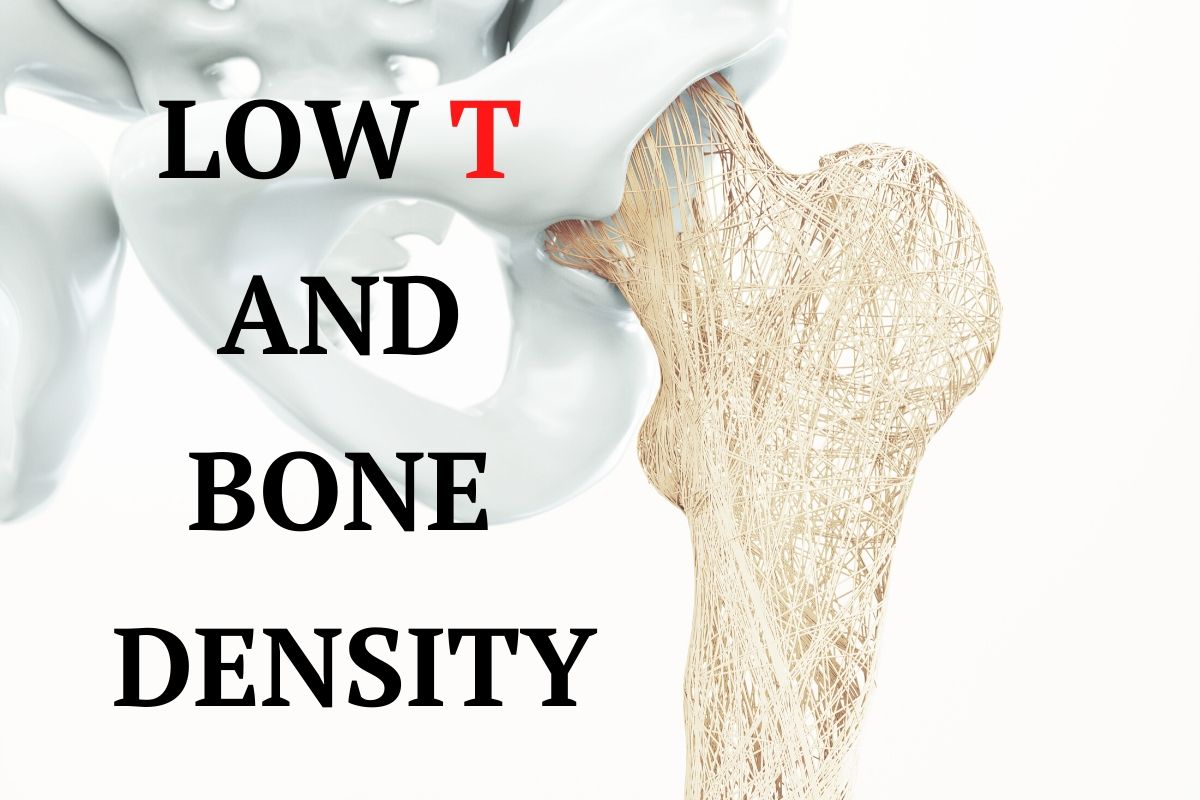Controlled clinical trial data published in JAMA Internal Medicine says: “As men age, they experience decreases in serum testosterone concentration. They also experience decreases in areal bone mineral density (aBMD), volumetric bone mineral density (vBMD), and estimated strength and an increase in fractures.”
Therefore declining testosterone and bone density decreases are inextricably linked. This is true in both men and women but might be much more visible in men since men of age 30 and beyond experience a sharper fall in testosterone levels (about 1% every year) than women experience.
Thus one issue you may also grapple with as you contend with low T could be thinning bone mass. This occurs, of course, because testosterone is an anabolic steroid or hormone, helping the body to build muscular tissue as well as bone mass. When, due to age, it begins to decline, the effects can be a reduction in bone density and muscles.
Another report indicates that hypogonadism in men can result in accelerated bone turnover as well as a significant increase in fractures. Testosterone and osteoporosis in both men and women are related. It is a fact that men record far fewer instances of this bone condition than women, leading to the chauvinistic stance that osteoporosis is a disease for women. In actual fact, science is behind it all.
Since men produce higher amounts of testosterone, the anabolic hormone that, among other functions, helps in building bone mass and muscles, men are able to develop a significantly sturdier and large bone frame or skeleton than women. Thus the likelihood of low testosterone and osteoporosis might be that much higher in many cases in women.
When it does occur, osteoporosis in men is of the secondary type, which is most often precipitated by disease, lifestyle, and other external factors. In this case, the cause is hypogonadism. Low testosterone back pain is a similar condition that is also linked with the body’s inability to sustain testosterone production in advanced years.
It is not proven that hormone replacement through patch, pellets, or gels can be a lasting solution to low T linked osteoporosis in either men or women. While this treatment is also administered, the intent usually is to treat other underlying symptoms that low T can engender. As for the osteoporosis itself, most doctors prefer a direct approach, treating the condition with medication and physiological therapies best suited to improvement.
Some studies also indicate that estrogen deficiency could cause osteoporosis in men. This is a possible condition being investigated medically, and there is, as yet, no concrete proof that this is so.
Treatment for the above condition will normally follow this process
Examination and Testing
The doctor will start with blood tests, saliva tests, physical examinations, and a look at the patient’s medical history. The blood test should pin down the exact testosterone levels in the patient. Once that is determined, other factors like physical symptoms and signs may be sought for corroboration of a low T diagnosis.
Diagnosis
Once test results are in, a diagnosis should be a fairly straightforward matter. Low T is diagnosed and a treatment plan decided.
Treatment
TRT is the best way to treat testosterone imbalance or low T. The doctor will decide a treatment plan, dosage, and period of treatment. This will be based on using either injection, gel or patch for delivery of the prescribed drug.
Monitoring and Follow up
Get back to the doctor if there is no improvement after a suitable interval. Remember you will need a pain reliever to alleviate the immediate discomfort of the condition.


